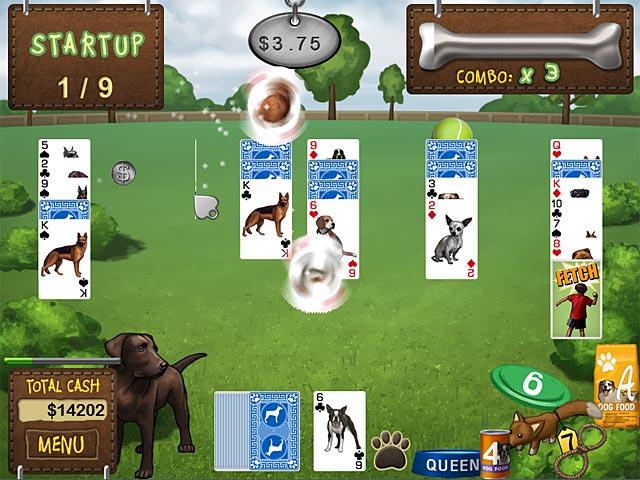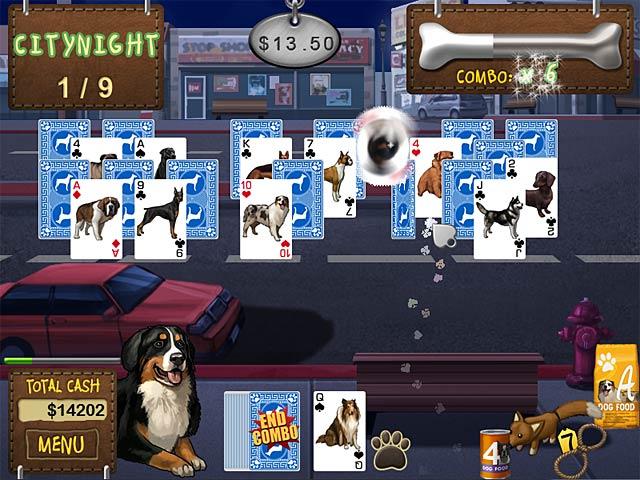- Wondering how to get Monopoly GO! free rolls? Well, you’ve come to the right place. In this guide, we provide you with a bunch of tips and tricks to get some free rolls for the hit new mobile game. We’ll …
Best Roblox Horror Games to Play Right Now – Updated Weekly
By Adele Wilson
Our Best Roblox Horror Games guide features the scariest and most creative experiences to play right now on the platform!The BEST Roblox Games of The Week – Games You Need To Play!
By Sho Roberts
Our feature shares our pick for the Best Roblox Games of the week! With our feature, we guarantee you'll find something new to play!Type Soul Clan Rarity Guide – All Legendary And Common Clans Listed!
By Nathan Ball
Wondering what your odds of rolling a particular Clan are? Wonder no more, with my handy Type Soul Clan Rarity guide.
Best in Show Solitaire Review
Best in Show Solitaire takes a normally simple form of solitaire (a variation on TriPeaks) and adds plenty of man’s best friends to form a game that’s unfortunately far too complicated for its own good. With a completely shallow (and almost nonexistent) story detailing your progress as an up-and-coming dog handler, you’ll be introduced to plenty of different breeds, with each of those dogs having different effects on your game.

Best in Show Solitaire won’t walk away with any blue ribbons.
Best in Show Solitaire takes a normally simple form of solitaire (a variation on TriPeaks) and adds plenty of man’s best friends to form a game that’s unfortunately far too complicated for its own good. With a completely shallow (and almost nonexistent) story detailing your progress as an up-and-coming dog handler, you’ll be introduced to plenty of different breeds, with each of those dogs having different effects on your game.
As for the gameplay itself, each Level is split into hands. In each hand, cards are laid out both face up and face down in randomly organized piles. You’ll be left with a deck of cards at the bottom of the screen that can be flipped over one by one. From there, your goal is to remove all of the cards from the board by playing cards that are one number higher or lower than your current active card, regardless of suit or color. For example, if you draw a Queen, you can play any Jacks or Kings from the piles above, with Aces going both ways (Kings or Twos). As you play cards (especially in combos without drawing any additional cards from your deck) you’ll receive money and will earn progress towards filling that Level’s Dog Bone.

Once you complete the Dog Bone, each Level doesn’t end, which makes little sense. The game describes your overall goal as being filling the Dog Bone, so if you fill it in four or five hands, why do we need to play four or five more to actually end the Level? In between hands or Levels, you’ll be encouraged to head into the Pet Store to buy items for your dogs. You’ll unlock new breeds for purchase frequently when playing, with each dog having a set of special abilities that are unlocked over time.
Each dog comes with a passive ability that is unlocked simply by playing multiple hands with that dog (to fill its loyalty meter), while active abilities are those that you can activate yourself. These come into play mostly when trying to remove obstacles that are frequently found in each hand. For instance, a Fetch card may block access to one or more columns in a hand, and can only be removed once you clear enough columns to find the randomly placed ball. This ball is automatically thrown, and your dog plays “Fetch,” removing the Fetch card from the board. With abilities, you may be able to skip finding the ball (or Squirrel, or any other obstacle, depending on the dog’s particular ability) and remove the Fetch card from the very beginning.

Even though you may find a dog that comes with great abilities, you’ll have to keep an eye on its Stamina. If it runs out, you’ll have to switch dogs, or purchase Water from the store to help it regain its energy. You can also train dogs to help unlock abilities, but these “pet simulation” features are entirely unnecessary with the sheer amount of dogs you’ll eventually have at your disposal. Besides, most of these features are so buried in menus or text that it’s easier to just switch to a different dog anyway.
Technically speaking, Best in Show Solitaire suffers from a few issues, the biggest of which are click-response issues. You may need to click on a card two or three times before it will be removed, or before you’ll actually draw a new card from the Deck, and the Undo button is either glitched or horribly designed, as you can use it one moment and not the next with seemingly no explanation as to why. Furthermore, the game comes with no widescreen option in the graphics, resulting in some of the worst stretching I’ve ever seen in a modern game. You can fortunately play the game in a windowed mode to counteract that, but this is an incredibly small window making the already small text that much harder to read.
These issues are incredibly unfortunate, as this variation on TriPeaks, in its most basic form, would actually be really fun if not for the overly complicated dog abilities and obstacle cards. It’s as if Best in Show Solitaire tries to be too much at once by throwing in far too many features where they simply aren’t needed. Why not simply have a Solitaire game that allows you to unlock dog breeds and learn about them without needing to take care of their stamina, loyalty or other issues? Without them, this one would easily be recommendable, but as it stands, it’s a try before you buy.

The good

The bad
More articles...
Monopoly GO! Free Rolls – Links For Free Dice
By Glen Fox
Wondering how to get Monopoly GO! free rolls? Well, you’ve come to the right place. In this guide, we provide you with a bunch of tips and tricks to get some free rolls for the hit new mobile game. We’ll …Best Roblox Horror Games to Play Right Now – Updated Weekly
By Adele Wilson
Our Best Roblox Horror Games guide features the scariest and most creative experiences to play right now on the platform!The BEST Roblox Games of The Week – Games You Need To Play!
By Sho Roberts
Our feature shares our pick for the Best Roblox Games of the week! With our feature, we guarantee you'll find something new to play!Type Soul Clan Rarity Guide – All Legendary And Common Clans Listed!
By Nathan Ball
Wondering what your odds of rolling a particular Clan are? Wonder no more, with my handy Type Soul Clan Rarity guide.







